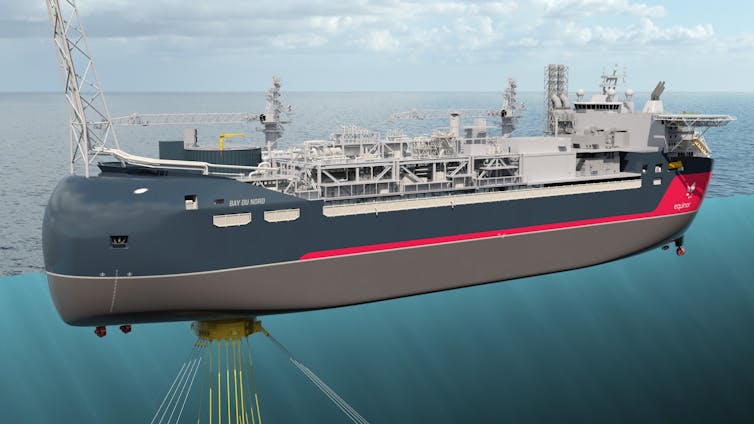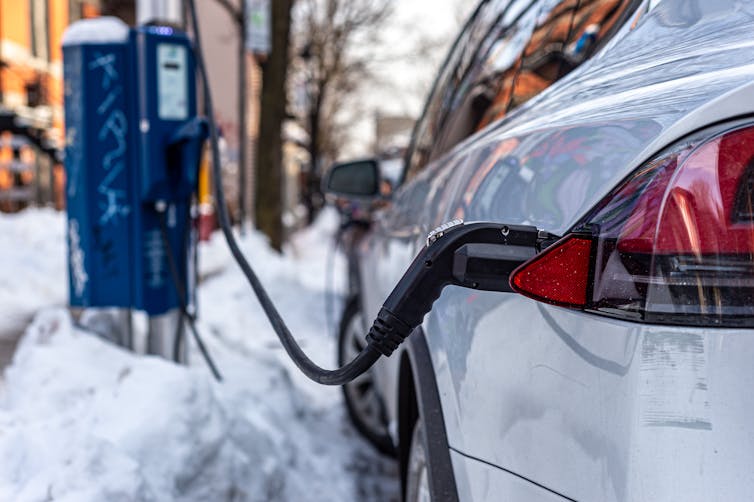Canada’s new climate plan is reckless. The federal government’s Emissions Reduction Plan doesn’t meet the criteria of credible net-zero emissions plans, and it lacks any vision of a future capable of inspiring Canadians to change their lives.
The Emissions Reduction Plan is the first released under the Net-Zero Emissions Accountability Act. It aims to put Canada on track to reduce emissions by 40-45 per cent from 2005 and reach net-zero emissions by 2050.
It will do neither.
More than 120 countries, 800 cities and 1,500 companies have made net-zero pledges. Meeting the Paris Agreement’s goal of limiting global warming to 1.5 C above the pre-industrial average requires global greenhouse gas emissions to peak before 2025 and fall to net zero by 2050.
According to climate researchers, credible, science-based net-zero plans must:
- Reduce emissions as soon as possible.
- Minimize reliance on removing emissions from the atmosphere.
- Comprehensively address all greenhouse gas emissions.
- Ensure an equitable approach to reducing emissions.
- Align emissions reductions with broader socio-ecological objectives like biodiversity and habitat conservation.
- Present an inspiring vision of a better future.
Canada’s Emissions Reduction Plan fails to meet any of these criteria.
Canada’s Emissions Reduction Plan falls short
The plan fails to aggressively reduce emissions in the short term. Instead, it sets an unambitious target for Canada’s largest and fastest growing source of emissions, calling for a 31 per cent reduction from the oil and gas sector, but it is not binding.
According to a recent analysis, to have even 50-50 odds of meeting the Paris Agreement’s 1.5 C target, Canada’s oil and gas output must fall by 74 per cent by 2030, with a complete phaseout by 2034.
Just a week after Canada released the plan, the government approved the Bay du Nord offshore oil project, which will produce about 200,000 barrels of oil per day starting in 2028, and 300 million barrels over its lifetime.

Illustration of the planned Bay du Nord floating production storage and offloading vessel. (Equinor)
The government claims that offshore oil extraction produces fewer emissions per barrel than the oilsands, but that’s a dangerous distraction. Oil is inevitably burned, which accounts for 80-90 per cent of its emissions. In a world with a shrinking global carbon budget, relative emissions intensity is irrelevant. Absolute emissions are what matter.
Canada’s decision is far out of line with climate science. The International Energy Agency’s 2021 net-zero pathway, which the government relies on heavily, clearly explains that the world can’t afford any new oil and gas development after 2021. None.
Even so, the government projects oil and gas production to continue rising until 2050, at which point Canada will produce more oil and gas (1.9 million barrels) than it did in 2019 (1.8 million barrels).
Underscoring the urgency of the latest warning from the Intergovernmental Panel on Climate Change, UN Secretary General António Guterres remarked: “The truly dangerous radicals are the countries that are increasing the production of fossil fuels.”
Canada doubles-down on carbon capture bet
Canada’s Emissions Reduction Plan bets heavily on costly and ineffective carbon capture, utilization and storage (CCUS) technology to keep emissions from the atmosphere. The 2022 federal budget provides a subsidy to the oil and gas industry in the form of a $2.6 billion CCUS investment tax credit — the budget’s single largest piece of climate spending.
The government has ignored the advice of more than 400 independent climate researchers, including myself, about the risks of CCUS. Decades of research shows that CCUS actually captures and stores very little carbon (less than 0.02 per cent of energy-related emissions in 2021), remains prohibitively expensive and requires more energy to operate than previously thought. Renewable energy and electrification are cheaper and proven non-polluting alternatives.
Canada’s ‘set-and-forget’ carbon price
Canada’s plan doesn’t comprehensively address Canada’s emissions. Canada continues to rely almost exclusively on carbon pricing to reduce emissions.
The carbon price increased to $50 per tonne in 2022, and will reach $170 in 2030. But the plan fails to close its many loopholes. An independent analysis shows that due to gaps and exemptions, large emitters paid, on average, only $4.96 per tonne of carbon in 2020.
Canada’s “set-and-forget” carbon price will not reduce emissions if it doesn’t apply to all of Canada’s emissions. The government’s own Net-Zero Advisory Body told the government this, but the government ignored its advice.
Canada’s plan is unjust
Canada’s plan is far from fair. The world could not hope to achieve the Paris Agreement if every country to adopted our dangerous approach.
Canada considers only its upstream oil and gas emissions, ignoring the downstream Scope 3 emissions that come from burning the fossil fuels we export. Canada’s plan unduly shifts the burden of reducing emissions to other countries.
Canada’s plan pays insufficient attention to broader socio-ecological objectives. While it commits additional funding to land- and forest-management initiatives, that pales in comparison to its investment in CCUS. Nor does the plan ensure that nature-based solutions will be designed and implemented in partnership with Indigenous Peoples and local communities that disproportionately bear the brunt of climate impacts.
A better way forward
Finally, the Emissions Reduction Plan doesn’t offer an inspiring vision of Canada’s net-zero future; it won’t motivate Canadians to fundamentally alter their lives to mitigate and adapt to climate change.
Comprehensive demand-side strategies across all sectors can reduce emissions by 40-70 per cent by 2050. While climate change demands system change, individuals also have an important role to play too, especially the wealthiest: The top 10 per cent of emitters are responsible for close to 50 per cent of global emissions.

More than 90 per cent of cars sold in Norway are electric. In Canada, 3.5 per cent of new cars sold in 2020 were battery-powered or plug-in hybrids, with most of them registered in British Columbia and Québec. (Shutterstock)
This requires an EPIC approach: Extreme positive incentives for change. Think of the significant subsidization of electric vehicles in Norway, where 90 per cent of cars sold are electric, or the dramatic cost reductions in solar and wind energy due to generous government support.
We need much more of this: Massive mortgage discounts for owners who retrofit their homes, huge tax cuts for installing heat pumps, free — and electrified — public transit. Sector by sector, we need vastly cheaper green options.
But far more than this, Canadians must envision a future that is both decarbonized and desirable. This means re-imagining how we live, work, move and play, and demanding that our governments make it happen.
There’s still time for Canadians to come together and create a future that’s not only liveable but worth living, but our window is closing fast.



 Lake beds are rich environmental records — studying them reveals much about a place’s history
Lake beds are rich environmental records — studying them reveals much about a place’s history  Drug pollution in water is making salmon take more risks – new research
Drug pollution in water is making salmon take more risks – new research  How to create a thriving forest, not box-checking ‘tree cover’
How to create a thriving forest, not box-checking ‘tree cover’  How ongoing deforestation is rooted in colonialism and its management practices
How ongoing deforestation is rooted in colonialism and its management practices  Ukraine minerals deal: the idea that natural resource extraction can build peace has been around for decades
Ukraine minerals deal: the idea that natural resource extraction can build peace has been around for decades  An unexpected anomaly was found in the Pacific Ocean – and it could be a global time marker
An unexpected anomaly was found in the Pacific Ocean – and it could be a global time marker  Fungi are among the planet’s most important organisms — yet they continue to be overlooked in conservation strategies
Fungi are among the planet’s most important organisms — yet they continue to be overlooked in conservation strategies  Swimming in the sweet spot: how marine animals save energy on long journeys
Swimming in the sweet spot: how marine animals save energy on long journeys  Fertile land for growing vegetables is at risk — but a scientific discovery could turn the tide
Fertile land for growing vegetables is at risk — but a scientific discovery could turn the tide  Burkina Faso and Mali’s fabulous flora: new plant life record released
Burkina Faso and Mali’s fabulous flora: new plant life record released  How America courted increasingly destructive wildfires − and what that means for protecting homes today
How America courted increasingly destructive wildfires − and what that means for protecting homes today  Extreme heat, flooding, wildfires – Colorado’s formerly incarcerated people on the hazards they faced behind bars
Extreme heat, flooding, wildfires – Colorado’s formerly incarcerated people on the hazards they faced behind bars  Rise of the Zombie Bugs takes readers on a jaw-dropping tour of the parasite world
Rise of the Zombie Bugs takes readers on a jaw-dropping tour of the parasite world  How is Antarctica melting, exactly? Crucial details are beginning to come into focus
How is Antarctica melting, exactly? Crucial details are beginning to come into focus 































